Why Do Scientists Want To Know About Jupiter's Exact Look? Advance Exploration of Jupiter
Advance Exploration of Jupiter
The gas giant has 79 moons and is known as the 'king of the planets'. Jupiter is the largest planet in the solar system and the fifth planet from the sun. The gas giant has a long, rich, history of surprising scientists.
Named after the kind of the gods in Roman mythology this "king of the planets" is a stormy enigma shrouded in colorful clouds. Its most prominent and most famous storm, the Great Red Spot, is twice the width of Earth.
Why Do Scientists Want To Know About Jupiter's Exact Look?
Jupiter helped to revolutionize the way we saw the universe — and our place in it — in 1610 when Galileo discovered Jupiter's four large moons: Io, Europa, Ganymede, and Callisto. These observations were the first time that celestial bodies were seen circling an object other than Earth and supported the Copernican view that Earth was not the center of the universe.
Since 2016, the NASA spacecraft Juno has been investigating Jupiter and its moons.
Jupiter is more than twice as massive as all the other planets combined, according to NASA. Jupiter's immense volume could hold more than 1,300 Earths. If Jupiter were the size of a basketball, Earth would be the size of a grape.
Jupiter was probably the first planet to form in the solar system, made up of gasses left over from the formation of the sun. If the planet had been about 80 times more massive during its development, it would have actually become a star in its own right, according to NASA.
HOW FAR IS JUPITER FROM THE SUN?
On average, Jupiter orbits about 483,682,810 miles (778,412,020 kilometers) from the sun. That's 5.203 times farther than Earth's average distance from the sun.
At perihelion, when Jupiter is closest to the sun, the planet is 460,276,100 miles (740,742,600 km) away.
At aphelion or the farthest distance that Jupiter reaches from the sun, it is 507,089,500 miles (816,081,400 km) away.
Jupiter's atmosphere resembles that of the sun, made up mostly of hydrogen and helium. A helium-rich layer of fluid metallic hydrogen envelops a “fuzzy” or partially-dissolved core at the center of the planet.
#jupiterlook
#largestplanet
#gasplanet
#solarsystem
-
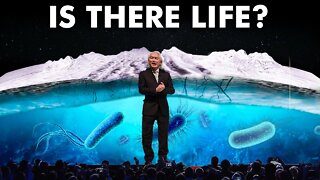 8:40
8:40
Future Space
1 year agoNew Discovery On Jupiter's Moon Terrifies Scientists
273 -
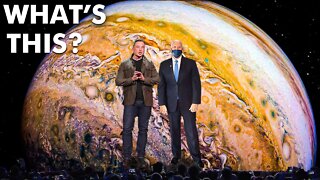 9:42
9:42
Future Space
1 year agoElon Musk & NASA's Terrifying NEW Discovery On Jupiter Changes Everything!
355 -
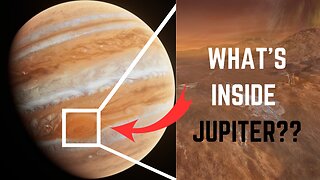 2:32
2:32
Atomic Analyzer
8 months agoInside Jupiter: A Closer Look at the Gas Giant
5 -
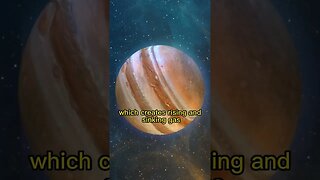 0:42
0:42
VeryUncommonKnowledge
1 year ago3 things you didn't know about Jupiter
-
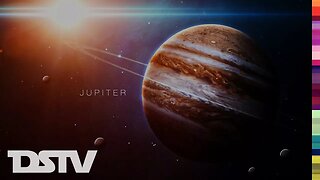 52:06
52:06
DeepSpaceTV
1 year agoJupiter's First Internal Structure Results From JUNO (01/25/2018)
26 -
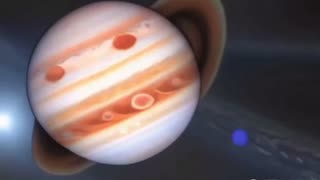 2:09
2:09
Pleasant88
10 months agoThe Untold Wonders of Jupiter: Unraveling Its Mysterious Depths
91 -
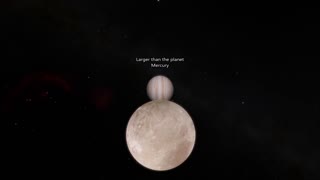 0:30
0:30
Beyond
1 year agoThe Galilean Moons of Jupiter
17 -
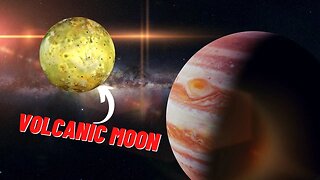 5:08
5:08
Dailydoseoffact
1 year ago20 Amazing Unknown Facts About Planet Jupiter You Should Know
1 -
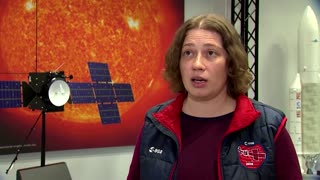 1:58
1:58
Reuters Innovation
1 year agoESA's Juice mission to explore Jupiter and its moons
19 -
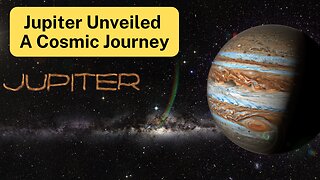 10:01
10:01
DiscoverIt - what do you want to learn about
7 months agoJupiter Unveiled: A Cosmic Journey
38